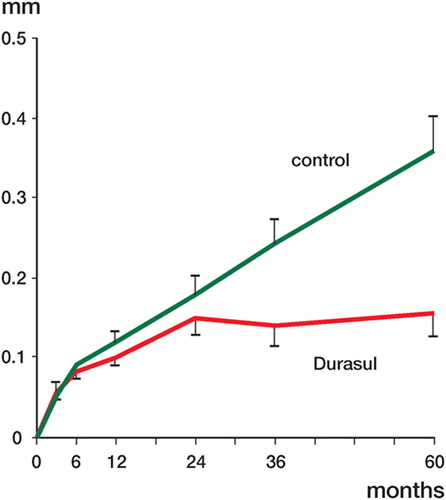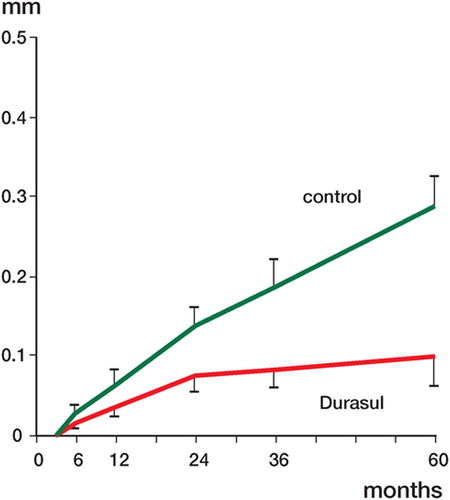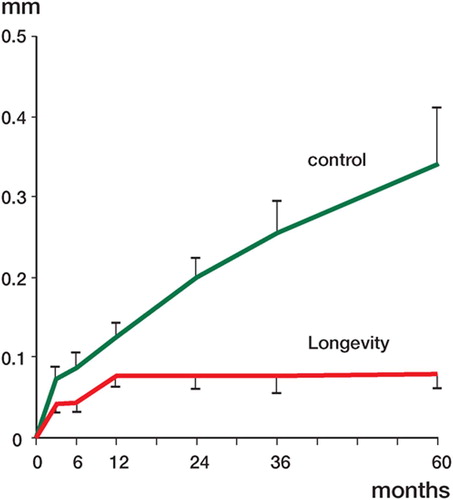Figures & data
Figure 1. Graph showing the degree of penetration of the femoral head (proximally) into the cemented acetabular component, in 28 hips with highly cross-linked PE (Durasul) and in 27 hips with conventional (control) PE. The examination was done with the patient in the supine position. Mean ± SE.

Table 1. Supine examination (at 0–5 years) for the “cemented” study
Figure 2. Graph showing the degree of penetration of the femoral head (proximally) into the cemented acetabular component, in 22 hips with highly cross-linked PE (Durasul) and in 24 hips with conventional (control) PE. This examination was done with the patient in the standing position. Mean ± SE.

Table 2. Standing examination (at 3 months to 5 years) for the “cemented” study
Figure 3. Graph showing the degree of penetration of the femoral head (proximally) into the uncemented acetabular component, in 19 patients with bilateral total hip arthroplasty. The examination was done with the patient in the supine position. Mean ± SE.

Table 3. Supine examination (at 0–5 years) for the hybrid study
Table 4. Standing examination (at 3 months to 5 years) for the hybrid study